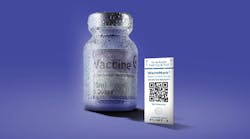Regulation continues to drive concerns for those involved in pharma manufacturing, production and distribution. This has led the sector to protect itself from criminals and counterfeiters through the Drug Supply Chain Security Act (DSCSA), among other legislation.
Since 2017, pharma manufacturers have been required to print a unique product identification code on all prescription drug units of sale and homogenous cases distributed in the U.S. The move came against the backdrop of continued increases in counterfeiting and the illicit supply or falsification of products, which in turn, have threatened brand values, market capitalization and supplier reputation.
Recently, new guidance documents have been published that provide recommendations for complying with the DSCSA in order to identify and trace drug products as they move through the supply chain. The development is designed to strengthen the FDA’s hand in helping to protect consumers from exposure to drugs that may be counterfeit, stolen, contaminated or otherwise harmful, while improving the detection and removal of potentially dangerous drugs from the supply chain.
Failure to comply with the requirements of the law, which include product and transaction information at each sale in paper or electronic format and the inclusion of unique product identifiers on individual drug packages, can result in penalties.
The ISO 12931 standard talks about the “performance criteria for authentication solutions used to combat counterfeiting of material goods” but specifies that “track and trace technology when used alone is not considered to be an authentication solution.”
However, when used in conjunction with an optically variable device (OVD) such as a hologram, track and trace technology can become a potent added value security solution.
What holography brings to the table
Indeed, the International Hologram Manufacturers Association’s view is that a product identifier initiative by itself cannot be considered an authentication solution under ISO 12931. However, integrated hologram track and trace can provide manufacturers with the tools to be fully compliant with the legislation; incorporating features that help users generate unique sequential, encrypted or random serial numbers, or identify and mark products overtly or covertly either via special self-adhesive labels or directly onto pharma products using a variety of print technologies.
The capacity of holograms to incorporate other forms of data and product tracking information will become increasingly important as technology pushes forward and the nature of anti-counterfeiting evolves. This enables them to be used for a widening range of pharma authentication and brand protection roles, linking on-pack product identification with supply chain management, market enforcement and forensic support services. In this way, the identity and distribution of goods can be controlled through a total system solution involving security authentication features, tracking mechanisms and investigative services.
Of notable value to the brand owner (and a strong financial incentive) is the fact that the information generated at the labeling stage can be linked to the company’s ERP system, enabling business functions such as manufacturing, supply chain management, finance, projects, HR and customer relationship management to be captured and better managed.
The move towards outsourcing the production of pharma products not only reduces manufacturing costs but also impacts the control of brand security and visibility. Here holograms can be integrated into the supply chain security process to allow companies to maintain control of their products: from the sourcing of labels or proprietary components to the manufacturing and shipment of finished goods.
They can also be integrated with secure web interfaces to help eliminate rogue ordering of products while authorized distributors can pick, pack and ship items in carefully measured quantities to customers, with the product’s movements throughout the supply chain, fully tracked and documented. It’s therefore important to encourage brand owners to take the necessary steps to create awareness about holograms — and their multifarious applications and benefits — to fully unleash their potential.
This column was adapted from a longer article on the International Hologram Manufacturers Association’s website.






